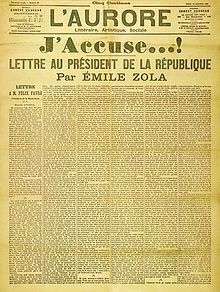Cross posted from The Stars Hollow Gazette
This is your morning Open Thread. Pour your favorite beverage and review the past and comment on the future.
Find the past “On This Day in History” here.
January 14 is the 14th day of the year in the Gregorian calendar. There are 351 days remaining until the end of the year (352 in leap years).
It is celebrated as New Year’s Day (at least in the 20th & 21st centuries) by countries still following the Julian calendar.
On this day in 1761, the Third Battle of Panipat is fought in India between the Afghans under Ahmad Shah Durrani and the Marhatas. The Afghan victory changes the course of Indian History.
The Third Battle of Panipat took place at Panipat (Haryana State, India), about 60 miles (95.5 km) north of Delhi. The battle pitted the French-supplied artillery and cavalry of the Marathas against the heavy cavalry and mounted artillery(zamburak and jizail) of the Afghans led by Ahmad Shah Durrani, an ethnic Pashtun, also known as Ahmad Shah Abdali. The battle is considered one of the largest battles fought in the 18th century.
The decline of the Mughal Empire had led to territorial gains for the Maratha Confederacy. Ahmad Shah Abdali, amongst others, was unwilling to allow the Marathas’ gains to go unchecked. In 1759, he raised an army from the Pashtun tribes and made several gains against the smaller garrisons. The Marathas, under the command of Sadashivrao Bhau, responded by gathering an army of between 70,000-100,000 people with which they ransacked the Mughal capital of Delhi. There followed a series of skirmishes along the banks of the river Yamuna at Karnal and Kunjpura which eventually turned into a two-month-long siege led by Abdali against the Marathas.
The specific site of the battle itself is disputed by historians but most consider it to have occurred somewhere near modern day Kaalaa Aamb and Sanauli Road. The battle lasted for several days and involved over 125,000 men. Protracted skirmishes occurred, with losses and gains on both sides. The forces led by Ahmad Shah Durrani came out victorious after destroying several Maratha flanks. The extent of the losses on both sides is heavily disputed by historians, but it is believed that between 60,000-70,000 were killed in fighting, while numbers of the injured and prisoners taken vary considerably. The result of the battle was the halting of the Maratha advances in the North.
The Third Battle of Panipat saw an enormous number of casualties and deaths in a single day of battle. It was the last major battle between indigenous South Asian military powers, until the creation of Pakistan in 1947.
To save their kingdom, the Mughals once again changed sides and welcomed the Afghans to Delhi. The Mughals remained in nominal control over small areas of India, but were never a force again. The empire officially ended in 1857 when its last emperor, Bahadur Shah II, was accused of being involved in the Sepoy Mutiny and exiled.
The Marathas’ expansion was stopped in the battle, and soon broke into infighting within their empire. They never regained any unity. They recovered their position under the next Peshwa Madhavrao I and by 1772 were back in control of the north, finally occupying Delhi. However, after the death of Madhavrao, due to infighting and increasing pressure from the British, their claims to empire only officially ended in 1818 after three wars with the British.
Meanwhile the Sikhs, the original reason Ahmad invaded, were left largely untouched by the battle. They soon retook Lahore. When Ahmad Shah returned in March 1764 he was forced to break off his siege after only two weeks due to rebellion in Afghanistan. He returned again in 1767, but was unable to win any decisive battle. With his own troops arguing over a lack of pay, he eventually abandoned the district to the Sikhs, who remained in control until 1849. . . . .
The battle proved the inspiration for Rudyard Kipling‘s poem “With Scindia to Delhi”.
The strength of Afghan military prowess was to both inspire hope in many orthodox Muslims, Mughal royalists and fear in the British. However the real truth of so many battle hardened Afghans killed in the struggle with the Marathas never allowed them to dream of controlling the Mughal Empire realistically again. On the other side, Marathas, possibly one of the only two real Indian military powers left capable of challenging the British were fatally weakened by the defeat and could not mount a serious challenge in the Anglo-Maratha wars 50 years later.



 On this day in 1932,
On this day in 1932,  On January 11, 1908, U.S. President Theodore Roosevelt
On January 11, 1908, U.S. President Theodore Roosevelt 
 On this day in 1901,
On this day in 1901, 
